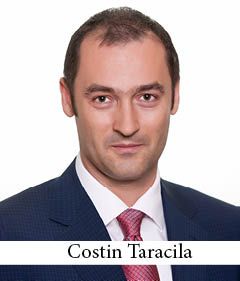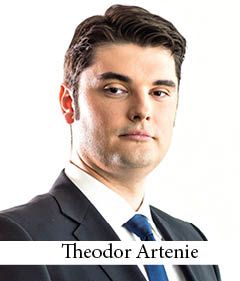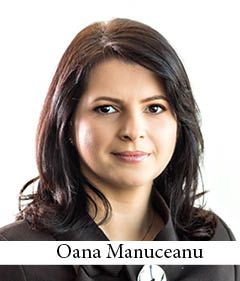The Buzz is a short summary of the major and relevant topics of interest in Central and Eastern Europe, provided by those best positioned to know: law firm partners and legal journalists/commentators on the ground in each CEE country.
Austria
True sales, mid-market M&A, and rushed real estate transfers in Austria
Regulatory issues in the financial sector are still the hot topic in Austria, according to Christoph Moser, Partner at Weber & Co., who says that “the securitization market [is] expected to soar in the next few months, based on market and client feedback we receive.” Aside from the well-known balance sheet clean-up pressures, securitizations in the form of true sales are starting to pop up on the radar. Moser explained that, until recently, several market players preferred synthetic securitizations without selling the actual loan portfolios. The problem was that in the aftermath of the crisis, these securitization terms became “too associated with the downfall and flagged in the minds of many as automatically toxic.” Mentalities are changing now, according to Moser, and this should eventually allow banks to clear up on their capital requirements and investors to diversify. This is also reflected in the European Union’s efforts to establish a Capital Markets Unit, which would include securitizations as a prime measure.
This shift away from the “securitization-equals-toxic” calculus is reflected in the increasing number of banks to explore true sales – “not just banks that are in trouble.”
Private M&A is also something keeping lawyers busy in Austria, with deals in the EUR 70-100 million range seeming to be especially attractive to investors.
Lastly, Moser pointed to changes in the tax system related to the transfer of real estate due to come into effect at the beginning of 2016. The current system of taxation is based on an outdated method of calculating value, and the new method will therefore result in a considerable surge in the amounts due for transfers of ownership. Although not really an inheritance tax, the transfer of ownership seems to have triggered a flux of work (for both notaries and lawyers) coming from families who are looking to transfer real estate assets to a younger generation before the new calculation system – which, Moser explained, in certain cases can result in a tax up to 10 times greater than the current system – is implemented.
Croatia
Crazy times in the banking world with a bankruptcy law to top it off
According to Natalija Peric, Partner of Mamic Peric Reberski Rimac (MPRR), banks in Croatia “are very concerned” over the so-called “Law on Swiss Francs” introduced in the country, which allows for conversions of loans from Swiss Francs to Euros. Peric reported that the local press is buzzing over the many legal claims already brought by banks against the Croatian Government, including three before the constitutional court, and a number of others who have announced their plans to file international investment arbitration procedures. “Difficult times for banks in Croatia” is how Peric described the aftermath of the legislation that was passed this year.
Another “delicate” piece of legislation passed by the Croatian Parliament recently was a new bankruptcy law. “Despite it being a relatively small country of 4.5 million people, Croatia has around 14-15 thousand companies currently with blocked accounts, even for more than 3 years now. Many of these are inactive companies with no employees that have a cumulated debt of over HRK 15 billion (approx. EUR 2 billion), and the new piece of legislation will push most of these into insolvency by default,” Peric explained.
The actual bill came into effect on September 1, 2015, and 6,500 bankruptcy proceedings commenced in the week following, with the government aiming to start the rest by the end of the year – a goal described by the MPRR Partner as “an ambitious plan to say the least!” Peric was positive, ultimately, saying, “it is a healthy exercise and it will be good for the market to be cleaned of these companies.”
Last but not least, a new renewable energy law has been introduced into Croatia, with several significant features, among which is the implementation of a new premiums system that was adjusted to align with EU Commission guidelines. The bill was adopted in September 2015, and part of it has already come into force. The new premiums system is to be implemented as of January 1.
Czech Republic
(Church) Real estate has the market buzzing
Not only is the real estate crisis over in the Czech Republic, but, according to Jiri Barta, Partner at bpv Braun Partners, people are quite optimistic about the future. “One sign of that,” Barta explained, “is that people are more willing to invest and less willing to sell – those with assets prefer sitting on them and waiting for the future.”
The hype is facilitated by several new funds being formed that are now in “an obvious need to spend money and are actively scouting the Czech Republic, perceived as a stable and risk-free market.”
With this real estate revitalization as the background, Church restitutions are the big topic that everyone is interested in. Barta explained that after the revolution a great deal of real estate was returned to private owners in the early 90s. The one notable exception was real estate that had been owned by the Church prior to nationalization, because, in Barta’s words, “while it was clear that what was taken from natural persons must be returned, politicians simply could not agree on how to approach former Church-owned assets.”
It took 20 years, but a compromise was found, which is exciting for lawyers and the real estate market overall, as it will offer an unblocking solution to a lot of old issues. Among those, Barta explained, is a provision put in place prohibiting the state from selling any assets that once belonged to the Church. This caused problems, since it often happened that commercial zones included property affected by a so-called “church clause,” and thus could not easily be developed. “And these are not rare instances,” Barta noted. “We’re talking about hundreds of them across the country.”
The solution is a rule that land that remains free and undeveloped will be returned to the Church, while land that has been changed or developed will not be returned, but financial compensation will be provided. There are still some ongoing issues related to proper land identification, and a few disputes are pending with Church lawyers trying to also secure plots that now belong to third parties – an aspect of the problem that is still a couple of years away from being solved.
Estonia
Funding loan portfolios and a legal market carousel
Estonia’s highlight, according to Varul Partner Marko Kairjak, is the growing number of non-bank providers of financing in the market. Raising capital for these financial players seems to be the main discussion point within the Estonian and European financial services authorities, as some jurisdictions (Lithuania, for example) have imposed a ban on loan-portfolio financing through bond issues. In the case of Estonia, however, these financial institutions have received a green light to raise funds for a loan portfolio via bonds through private placement, but they have not been allowed to go public with them – “a somewhat awkward set-up,” as Kairjak described it. While the main goal of the financial market is to have these “specialized institutions offer an alternative source of funding” for customers, it is not yet 100% clear how to proceed with capitalizing these loan portfolios.
The second big topic in Estonia – and the Baltic region as a whole, according to Kairjak – is the ongoing consolidations in the legal market. Kairjak explained that with the merger between Cobalt and Borenius, Cobalt is now at the top in terms of size. (See page 15). “We used to have Sorainen with around 60 lawyers and everybody else with around 30-35. Soon, it looks like we’ll have a market with 2-3 firms close to 60, another ‘big 2’ or ‘big 3,’ and everyone else much smaller. The market is, at the moment, waiting to see what this amalgamation will lead to, since these large types of firms will grow to an economy of scale that will push the rest of the smaller players to determine what their comparative advantage will be and force them to decide if they want to be a small full-service competitor or turn into a boutique set-up. We’ll see how this legal market carousel will stop, but it will likely take 2-3 years.”
Latvia
Work is building up
One of the industries to keep an eye on in Latvia, according to Theis Klauberg, Partner at bnt attorneys-at-law, is construction. “Hardly anything has been built since the crisis, especially in commercial real estate,” Klauberg explained, “and office space in the capital of Riga is starting to run short.” He added that “we have investors coming into the country and they are looking for space to rent but soon realize that in the center of Riga anything above 250 square meters is very limited.”
There have been some construction projects in the country, according to Klauberg, but most of it has been focused on residential buildings, fueled by Russian demand. With the Ukrainian and Russian crisis and the ruble taking a tumble, that demand has dried out. The result? “We simply have too many flats and no new offices.” The situation is price-driven as well, Klauberg explained, as rental prices in Latvia – below EUR 12 per square meter – are considerably lower than in other Baltic states, which makes it “difficult to motivate anyone to build.” By contrast, in Lithuania for example, the market recovered much faster as a result of “investors being actively invited in by the Lithuanian Government, coming in much sooner, and taking up space – thus driving up demand.”
Klauberg reported relatively few legal updates of significance, with the highlights being a potential tax reform and a growing restriction on selling agricultural land to foreigners.
In terms of the legal industry, Klauberg reported an “uneventful summer” in terms of big-ticket deals, but he said that M&A and FDI is slowly picking up – and pointed to his firm’s German clients, which he said are showing increased interest in Latvia. Against this background, he also pointed to the great deal of consolidation going on among Baltic law firms, and commented on some of the formerly well-known brands – and some smaller firms – disappearing off the radar altogether.
Montenegro
The Turkish connection
Montenegro is registering a good level of interest from Middle Eastern investors, according to Vladimir Dasic, Partner at BDK Advokati/Attorneys at Law. He pointed out that there are still a few companies in the market awaiting privatization, but said that there was “nothing really spectacular to report on that front at this point in time.” By contrast, he said, the country is registering a lot of transactions in the hotel, leisure, and resort areas.
Turkish investors seem to be leading the pack in terms of interest in banking (Ziraat Bank), real estate (Dogus Group), and port logistics (Global Ports Holding). Dasic explained that political ties support this interest to a great extent, but said it also has to do with the fact that, although Montenegro is a smaller market than Turkey, there are a lot of commonalities between the two countries in terms of industry practices. The trend seems like a natural one from the Turkish perspective, according to Dasic, since it is driven both by the ever-expanding Turkish potential clientele in Montenegro as well as a drive to capture market share now, before the country joins the EU.
Particularly exciting is the interest shown by several multinational groups looking to open banks in Montenegro, which would focus on private banking. The process is currently on hold, Dasic said, but be believes it would be potentially very beneficial for the market overall.
The energy sector, especially in renewables, was the last one that the BDK Partner pointed to as a “must-keep-tabs-on,” with a number of interesting projects in the pipeline.
Romania
Steady growth with a touch of caution
“Generally [in Romania] 2015 looked better than 2014,” explained Sorin David, Partner of D&B David and Baias. “As a country, we are growing, and we are increasingly convincing more and more investors that we are solid and we’re a good investment ground with no major risks,” he added. The D&B Partner said that M&A, while on the rise, is not concentrated in one particular industry. Instead, the energy, food production, transportation, medical services, and financial services (especially in terms of NPL transactions) sectors are all registering increased activity, and he added that, “it is definitely a buyers’ market, not a sellers’ one at the moment.
Aside from that, commercial lawyers are being kept busy by what David described as a “projects driven market,” with some activity on the regulatory, restructurings, litigation, antitrust, and administrative areas.
One particular trend in Romania, David said, is that prosecutors (both from general and specialized offices) are picking up speed in structuring of various cases at the moment, which has an impact on the business world overall, especially in terms of evasion cases. “It is an exercise very much in its initial learning-curve stages,” explained David, which is “worrying since I am not sure that prosecutors and criminal courts are sophisticated enough to assess certain schemes considered normal in other countries accurately and, as a result, they tend to flag them simply as tax evasion.” This is particularly concerning to the business community since, as David pointed out, “prosecutors have tremendous tools at their disposal to freeze a business with an end goal of recovering sums flagged as due.” For the legal community, this means a lot of work – both preventive and forensic – and David stressed that “middle management and up are definitely more concerned with understanding the potential pitfalls and more engaged in preemption than before.”
Serbia
Excited over infrastructure partnerships
Public Private Partnerships have had a “late legal framework that did not register a lot of success in Serbia with [the] one initial road concession having failed,” reported Stojan Semiz, Partner with Zavisin Semiz & Parters. Things are looking up these days, however, with a joint venture between Serbia and Arab investors that resulted in the Belgrade Waterfront project. Although it was not performed within a PPP framework, it is nonetheless a hot topic in the country, as it represents “a successful partnership with a foreign investor to show others that there is drive at an institutional level and that it can work.”
There are, in fact, several exciting initiatives in the works, according to Semiz, including a waste disposal project, parking spaces, and even an initiative for a PPP transportation project. While all are still in the project-and-tendering phase, he notes, he is excited to see the move in areas that “have no precedent in the last 15 years,” both in terms of the investors and work they will draw in (including for the lawyers advising on the tenders at this stage), and in terms of “addressing long-standing infrastructure problems.”
Real estate work has been keeping lawyers busy in Serbia as well, primarily in terms of financing and refinancing. Semiz explained that the latter, in particular, is a hot area at the moment in light of the fact that, after the financial crisis, lenders are much more cautious when it comes to investing in actual development projects, but show much more appetite when a project is fully stabilized.
Thank you!
We thank the following for sharing their opinions and analysis on the news:
- Vladimir Dasic; Partner; BDK Advokati/Attorneys at Law
- Theis Klauberg; Partner; bnt attorneys-at-law
- Jiri Barta; Partner; bpv Braun Partners
- Sorin David; Partner; D&B David and Baias (Connected law firm of PwC)
- Natalija Peric; Partner; Mamic Peric Reberski Rimac
- Marko Kairjak; Partner; Varul
- Christoph Moser; Partner; Weber & Co.
- Stojan Semiz; Partner; Zavisin Semiz & Parters
This Article was originally published in Issue 2.5. of the CEE Legal Matters Magazine. If you would like to receive a hard copy of the magazine, you can subscribe here.



 Schoenherr: As one might expect, the debates around some of the amendments in the first category mentioned above were rather abundant and somewhat fierce – around the VAT rate cut, for example.
Schoenherr: As one might expect, the debates around some of the amendments in the first category mentioned above were rather abundant and somewhat fierce – around the VAT rate cut, for example. Schoenherr: The main debate was around the reduction of the standard VAT rate (as already mentioned above), which was initially suggested to be from 24% to 19%. After several rounds of talks, it was agreed by all parties to reduce the VAT rate gradually – to 20% in 2016 and to 19% in 2017.
Schoenherr: The main debate was around the reduction of the standard VAT rate (as already mentioned above), which was initially suggested to be from 24% to 19%. After several rounds of talks, it was agreed by all parties to reduce the VAT rate gradually – to 20% in 2016 and to 19% in 2017.